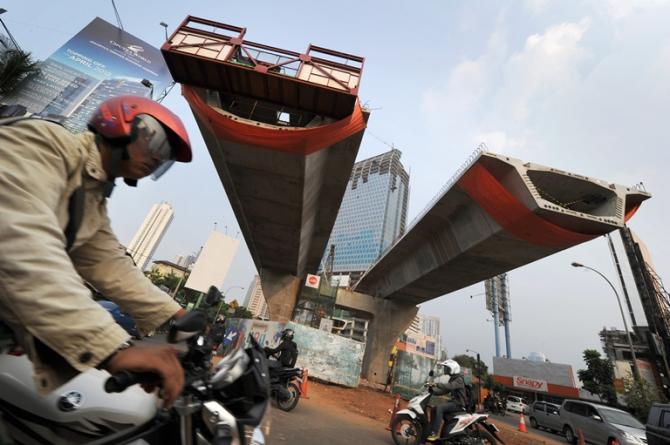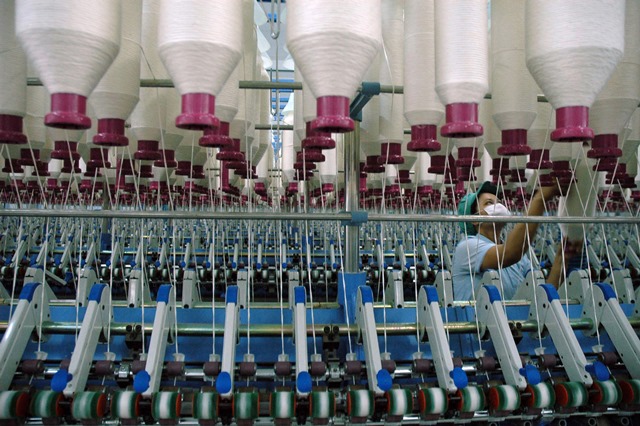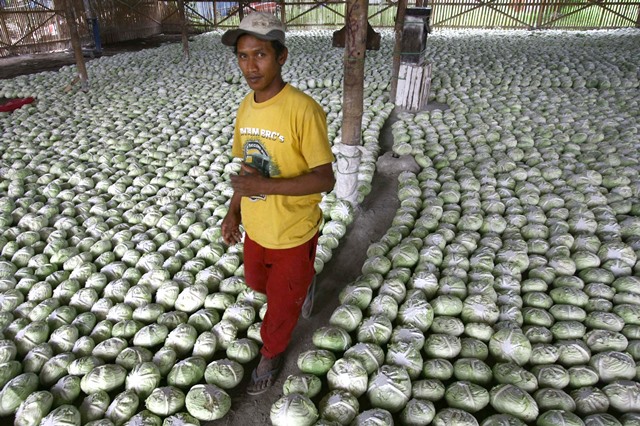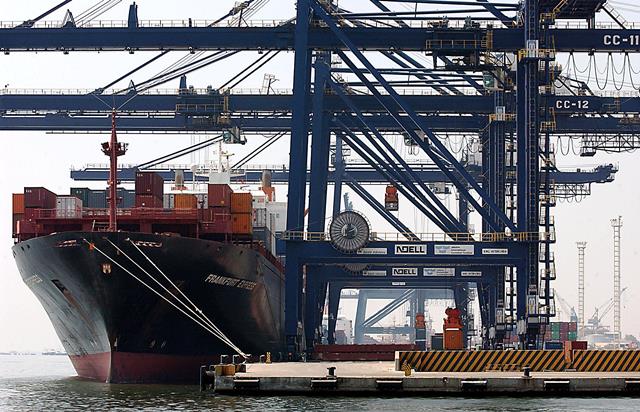
Despite skepticism and possible delays in implementing all aspects of the ASEAN Economic Community (AEC) blueprint, leaders of the Association of Southeast Asian Nations nonetheless claimed significant progress in actually building a community during the leaders summit in Phnom Penh in November 2012. They firmly set the date for the establishment of the AEC, one of the three mutually reinforcing pillars of the ASEAN Community, as New Year’s Eve 2015. They also reaffirmed that establishing the ASEAN Community is a continuing process that will not end on that day.
The goal of economic community in Southeast Asia has been a long and evolutionary process dating back to 1977. It started with the creation of the ASEAN Preferential Trading Arrangement, followed by the launch of the ASEAN Free Trade Area in 1992 and negotiations for free trade agreements with the grouping’s dialogue partners. Subsequently, the adoption of the AEC blueprint in 2007 set out an agreed roadmap as a guide. In other words, to arrive at where we are today, it took 37 years of deliberation, negotiation, preparation and the development of numerous initiatives at the national and regional level.
The AEC is not only a single market. It is strategically comprised of four mutually supporting components or pillars: a single market and production base, a competitive economic region, equitable economic development and integration into the global economy. As of 2013, the AEC blueprint scorecard indicated that 78 percent of measures and action lines across those four components have been implemented during the past six years. Thus, in the remaining two years – the final phase – around 22 percent remains to be accomplished.
Benefits already seen
What has ASEAN economic integration contributed thus far to Southeast Asia’s economy, including Indonesia? In the past two decades, it generated a significant increase in ASEAN’s total trade, from $429 billion in 1993 to $825 billion in 2003, and around $2.4 trillion in 2011. The share of intra-ASEAN trade as part of the region’s total also increased from 22 percent in 2000 to 25 percent in 2011. As economic integration strengthens further, the hope is that intra-ASEAN trade will grow further.
Although the percentage of ASEAN’s trade with the rest of the world decreased from 51 percent in 2000 to 41 percent in 2011, trade between ASEAN members and with its dialogue partners during the same period increased from 27 percent to 34 percent. Foreign direct investment inflows to ASEAN in 2011 hit a record-breaking $114 billion, a 23 percent increase from the previous year. FDI also grew in 2012 and 2013. At the same time, international tourist arrivals into ASEAN increased to 81 million in 2011, 47 percent of which were intra-ASEAN visitors, thanks to the grouping’s free visa-on-arrival policy and affordable air travel across the region.
Notwithstanding continuing global economic uncertainty, particularly within the euro zone, ASEAN continues to show its economic resilience, growing at more than 5 percent annually. Per capita income increased from $2,300 in 2010 to $3,800 in 2012. The Asian Development Bank Institute predicts that ASEAN’s per capita income could double by 2030 if the region continues to be innovative, competitive and harmonious. ASEAN’s combined GDP of $2.2 trillion makes it the third-largest economy in Asia, after China and Japan. The 1997-1998 Asian Financial Crisis provided significant lessons and enabled ASEAN to make a relatively quick exit from the fallout of the 2007-2008 Global Financial Crisis.
A series of measures have been taken to keep the ASEAN economy strong. The Chiang Mai Initiative, a multilateral currency swap arrangement that includes ASEAN, China, Japan and South Korea, was established to prevent a repeat of the 1997 Asian crisis in the region. The implementation of the Master Plan for ASEAN Connectivity, adopted in 2010, addresses infrastructure issues and enhances competitiveness. In addition, the entry into force of the Comprehensive Investment Agreement will further boost foreign direct investment.
The launch of the ASEAN Single Window pilot project, the establishment of the ASEAN Exchange in 2011 and the ASEAN Infrastructure Fund last year are specific measures to enhance integration and competitiveness. Continued negotiations to finalize services and investment agreements, particularly with its free trade agreement partners and within the negotiating process of the Regional Comprehensive Economic Partnership (RCEP), are essential to ASEAN’s integration into the global economy.
Stability, yes, but challenges remain
ASEAN’s political-security stability and economic potential have proven extremely attractive to countries, multinational corporations and businesses seeking investment opportunities. ASEAN offers a huge market with a rapidly growing middle class and a competitive production base aimed at this vast market and beyond. Continued high economic growth and the availability of natural resources, in addition to a young and productive population, have made ASEAN an ideal destination for foreign direct investment. Its belief in promoting democracy, good governance, sustainable development and protecting human rights are also essential in making it more attractive.
Despite this potential, however, ASEAN still faces difficult challenges as the result of both internal and external dynamics. Territorial disputes, overlapping sovereignty claims and significant perceived power rivalries within the region can potentially lead to tensions and ultimately conflict. Thus, ASEAN needs collective, effective and consistent responses to address these issues. Similarly, new and emerging threats such as transnational crime are critical challenges that must also be vigorously addressed to maintain security and stability. Many of its instruments and mechanisms have enabled ASEAN to consistently play an active role in maintaining regional peace and stability for decades. These diplomatic strengths will need to continue and be enhanced to meet emerging threats.
All of ASEAN’s achievements as a region are mutually supportive of Indonesia's own efforts to enhance its national resilience, stability and economic growth, of course. After the 2008 financial crisis, Indonesia's economy rebounded strongly, but it was helped by its ability to tap into ASEAN as a collective body, as it retained GDP growth higher than 6 percent between 2009 and 2012.

Furthermore, as ASEAN achieved a record-breaking level of FDI inflows in 2012, Indonesia did the same. Despite the downward trend in global FDI flows, both Indonesia and ASEAN offer alternatives. While a slowdown is anticipated in 2014, FDI inflows into Indonesia were higher than $29 billion in 2013, and investment in Indonesia ranks fourth among the largest recipients in Asia, led by China.
Limited public understanding
The political stability and vibrant democracy enjoyed by Indonesia after its democratic transition began in 1999 helped make the country an attractive destination for investment. Indonesia, therefore, is aiming to be an alternative competitive production base within ASEAN. Tourism is also growing and has become an important source of foreign exchange. In this regard, increased FDI inflows into Indonesia will not only create jobs but also opportunities for improving skills, technological capacity and competitiveness.
Thus, the remaining 22 percent of the measures for the ASEAN Economic Community, including promoting equitable development, should be in Indonesia's own national interest. The ASEAN leaders’ decision to accelerate the implementation of the AEC blueprint at the regional and national levels not only provides a strong political impetus, but also a strong political commitment.
Yet this will not be very effective if it is not supported by concrete action. ASEAN’s ambitious goals will not automatically be realized without adequate awareness and understanding among all stakeholders and ASEAN’s people. One of the urgent questions to be addressed is the low level of awareness about ASEAN, not only in Indonesia but also among all 10 member nations. Efforts to make ASEAN less elitist and more people-oriented are therefore critical.

A study sanctioned by ASEAN has indicated that public understanding of the grouping, including the AEC, is indeed very low. The qualitative information gathered from interviews with selected industry associations and civil society organizations in the 10 countries indicates that 30 percent of businesses lack a basic understanding of the role and purpose of ASEAN, while only 15 percent have a good understanding. Sixty-nine percent of the businesses surveyed had never participated in any ASEAN forum, mainly because of lack of interest due to paucity of information.
The level of understanding among the general public is even lower. Seventy-six percent of those surveyed have no basic understanding of the coming ASEAN Economic Community. Most take regional peace and stability for granted and associate ASEAN only with benefits such as less expensive tourism and travel due to the visa exemption regime and low-cost airfares. The survey also noted that in general business leaders, including those operating in the 12 priority sectors included in the Single Market and Production Base, have a “forward looking attitude” about the realization of the AEC.
Skepticism and fears
Because the level of public awareness is low in all ASEAN countries, it’s not surprising that there is a high rate of skepticism that the AEC will come into existence in late 2015. Some prominent Indonesian business leaders have even suggested postponing the AEC because they feel that domestic preparations are still insufficient and the country is not competitive enough. They would prefer to see the government implement measures to improve competitiveness and level the playing field to ensure that the AEC will not jeopardize their businesses.
Even worse, some within Indonesia fear that the AEC will only turn Indonesia into a big market for the products of other members. Because of this lack of understanding, many tend to forget that 99.9 percent of the tariff lines for the ASEAN-6 countries (Brunei, Indonesia, Malaysia, the Philippines, Singapore and Thailand) have been eliminated since Jan. 1, 2010. Despite the fact that the AEC will be established at the end of 2015, the free flow of goods actually began five years ago among at least six countries.
Another issue is the anticipated free movement of skilled labor across ASEAN. What most people do not understand is that only engineers will be able to move across ASEAN beginning in 2016 among eight professions currently being deliberated under the scheme of the ASEAN Mutual Recognition Arrangements (MRA). The AEC will not open the doors for the free movement of all professionals, just those in eight fields to begin with.
Within some member countries, the free movement of skilled workers is also perceived as a potential threat to domestic employment opportunities. In Singapore, for instance, there is “Singapore for Singaporeans.” In Indonesia, the National Economic Committee concluded in its report on the country’s economic prospects for 2014 that Indonesia would only be a market and would become a bystander if the nation could not compete within the AEC. Such sentiment has contributed to a growing anxiety among ASEAN peoples and potentially hampers the effective utilization of the economic community.
This lack of understanding is prevalent even among government officials, and has become a major obstacle in implementing the necessary national measures to follow regional initiatives and commitments. All parties involved, including national committees established to prepare the AEC, must join hands in a coordinated and coherent manner, and use the little time left to ensure better understanding and effective implementation of the AEC at the national level.
Despite all of these fears and uncertainties, mainly attributed to a lack of awareness, data indicates that the AEC, as it stands, has not only increased intra-ASEAN trade, investment and tourism, but also regional resilience. The ability of ASEAN to exit relatively quickly compared to others from the post-2008 global financial malaise is one important case in point. Equitable economic development, launched in Indonesia in 2011, will enable small and medium enterprises to flourish and play important roles within the AEC.
Government can make a difference
To dispel fears that the AEC will turn Indonesia into a mere market, the government should continue to do what it is doing right. This includes combating corruption, improving human resource development and expanding infrastructure. Much can still be done in the next two years if we are consistent and persistent in preparing ourselves for the advent of the ASEAN Economic Community. Thus, Indonesia should never stop working toward political stability, combating corruption, building infrastructure, increasing human resource capacity and improving competitiveness. It should always be a national priority, including for the next government.
Although most FDI inflows into Indonesia have been concentrated in the manufacturing sector in Java and for the domestic market, with the effective implementation of the Master Plan on the Acceleration and Expansion of Economic Development (MP3EI) and improved competitiveness and better logistical infrastructure, investment can expand to other areas and enhance Indonesia’s capacity to produce for export.
Furthermore, Indonesia's potential demographic bonus and rising middle class should be harnessed to improve its competitiveness. This will only become a lost opportunity if the talent is not appropriately harnessed. Raising awareness among government officials including through intensive training can increase their understanding and enable them to effectively contribute both in terms of the negotiations and the implementation of the AEC; this would be far better than only campaigning to postpone the AEC.
As of last year, most of the measures to facilitate the free flow of goods, services, investment, capital and skilled workers had already been adopted and signed. Guidelines to improve competition and initiatives to promote consumer protection, protect intellectual property and develop infrastructure are already in place. In this context, Indonesia's preparations should focus on ensuring better coherence and coordination in the negotiation processes of the remaining measures and effective implementation of agreed measures, including fixing any shortcomings in the AEC’s implementation in the field. Bolstering human and institutional capacities will enable ASEAN to ensure effective alignment of regional agreements with national implementation.
As a founder of ASEAN and the strongest advocate of integration, Indonesia’s continued leadership is essential to maintain peace and stability, and promote prosperity. Indonesia has to effectively utilize the next two years to raise awareness, strengthen coordination and coherence, and increase human and institutional capacity.
During its chairmanship of ASEAN in 2011, Indonesia tried to accelerate the ratification process and align some of the regional initiatives with its own national programs. Indonesia issued Presidential Instruction No. 11/2011 mandating that the coordinating minister for the economy work closely with all relevant ministries and institutions to ensure the effective implementation of the AEC blueprint at the national level. Furthermore, President Susilo Bambang Yudhoyono also established a national committee to improve competitiveness so that the country gains significant benefits from the AEC.
At the same time, we need to increase the promotion of national awareness. This should be carried out in tandem with efforts to improve competitiveness. Promoting awareness and improving national preparedness for the AEC should be accelerated so that when the AEC is finally established; there will be no recurrence of debates such as those that followed the implementation of the ASEANChina Free Trade Agreement.
It is also crucial at this stage to ensure full participation and greater awareness among all relevant national stakeholders on the negotiation process of the Regional Comprehensive Economic Partnership (RCEP), which is intended to complete its negotiations by the end of 2015.
Despite the National Economic Committee’s lukewarm report on Indonesia’s economic prospects for 2014, including gross domestic product growth of only 5.7 percent, the projections are trending toward more positive territory in 2015. The average economic growth of ASEAN remains above 5 percent, and positive developments in the US economy justify a cautiously optimistic outlook for ASEAN’s economy in 2014.
Looking toward the new government
Legislative and presidential elections scheduled for April and July, and the resulting wait-and-see posture of the business community, are bound to result in slower economic growth in Indonesia this year. In view of this outlook, the National Economic Committee has provided a set of recommendations to enhance economic competitiveness through, among other things, improving the business environment, logistics and physical infrastructure; improving bureaucratic services both at the central and regional levels; and enhancing the production system and productivity of Indonesia’s workforce.
The committee has also advised the government to continue creating fiscal incentives and to intensify the development of export oriented industrial zones. These zones should no longer be concentrated in Java but spread across other regions in accordance with the MP3EI. The effective implementation of these recommendations will not only enhance Indonesia's economic growth, but also accelerate its preparations for the AEC.
Consistency and sustained implementation should not only continue through the final days of the Yudhoyono administration, but also beginning with the new government in October. Consistency in policy implementation, particularly in regard to the AEC blueprint, is necessary to ensure that all targets are attained. This is important considering that the new government will have little time to further boost national preparedness and raise awareness about the AEC.

Promoting better understanding among government officials at the national and local levels and improving their ability to benefit from the AEC should be the continuing priority focus. More coherent policy development and implementation should be promoted at many forums to which Indonesia is party, such as the Asia-Pacific Economic Cooperation grouping and the G20.
Improving Indonesia’s competitiveness and infrastructure should be expedited to reduce the costs of logistics, which are still higher than other ASEAN economies. Removing bottlenecks in government programs and improving workforce productivity should also be a priority. Potential opportunity loss in utilizing Indonesia’s demographic dividend should be seriously addressed.
Last but not least, the free movement of skilled workers within ASEAN should be complemented by stronger measures to protect the rights of migrant workers throughout the region. Although the AEC blueprint refers only to the free movement of skilled workers, the ASEAN Charter clearly affirms the purpose of “creating a single market and production base which is stable, prosperous, highly competitive and economically integrated with effective facilitation for trade and investment; facilitated movement of business persons, professionals, talent and labor; and freer flow of capital.” Thus, the charter promotes the movement of all workers.
On the whole, I remain optimistic that the AEC can be attained by the end of 2015, and I am sure that with it, Indonesia will not suffer economically but instead enjoy its many benefits together with other ASEAN members, and those foreign investors and trading partners who keep faith.
We should not waste our limited time just to entertain complaints and act out of desperation. In preparing the new Indonesian government that will emerge from this year’s election, our new leaders should ensure a smooth transition by continuing the investments we have made during the past decade and ensure they are not wasted.
One of the critical tasks for the bureaucracy in every five-year election cycle is to prepare strategic long-term and medium-term plans that may be utilized by the elected government in shaping policy. In this context, putting in place stronger strategies to better prepare for the arrival of the AEC is essential.
Ngurah Swajaya is the former Indonesian ambassador to ASEAN and currently serves on the High-Level Task Force on
Strengthening the ASEAN Secretariat and Reviewing ASEAN Organs.







 resized.png)
